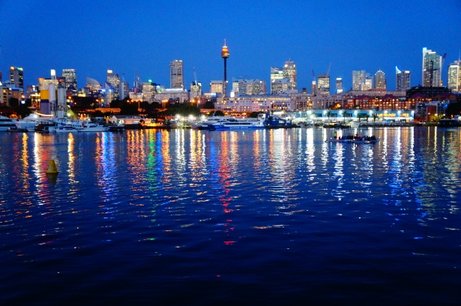1. Australian Work Visa
2. Australian Study Visa
3. Australian visitor Visa
4. Australian Business Visa
Immigration to Australia
 Like
most countries, Australia welcomes visitors or travelers from all over
the world to either come as temporary visitors for short-term basis
or to immigrate to Australia.
Like
most countries, Australia welcomes visitors or travelers from all over
the world to either come as temporary visitors for short-term basis
or to immigrate to Australia.
Therefore, there are two categories of visas issued by the Australian government. The first is known as the ‘Non-Immigrant Visas’. This type of visa is for those people who happen to be foreign nationals wishing to come into the USA for leisure/tourism, business/temporary work, study, medical treatment and other related grounds. And the other is known as ‘Immigrant visas’ which are offered to those foreign nationals who wish or intend to work or settle permanently in Australia.
Australia has a number of different types of immigration plans which are classed under different categories. The most widely used ones are:
Employment/Skilled visas
These are usually awarded to highly skilled workers and candidates are
assessed against a points based system.
Family visas
These visas are granted on the foundation of family ties in Australia
including the individual’s spouse, son/daughter, parents, grandparents
and brother/sister.

There are three major steps in the application process
for an Australian Immigration Visa:
Eligibility to apply: an individual has to be a migrant who has a permanent
residence, meaning having a visa which allows an individual to live
in Australia indefinitely. Or an individual can have a family member
who either has a permanent residence in Australia or is an Australian
citizen. An individual can also be sponsored by an employer or apply
for the employment/skilled worker visa.
Complete an Application form online, on the Australian Government’s
Department of Immigration and border protection website. http://www.immi.gov.au/Pages/Welcome.aspx.
This form basically consists of the applicants bio metrics and financial
situation. You can also print out the form and mail it to the overseas
citizenship unit which is the Australian consulate/embassy in your country
or mail it directly to their office in Canberra.
Send Original Documents: Including one’s birth certificates, marriage/divorce
certificates (if applicable), affidavits, and a few photographs.
After the Department of Immigration in Australia receives an individual’s
application, they will be invited to a citizenship appointment. A letter
eill be received from the Australian government with the applicant’s
appointment details and further information. At your appointment, the
applicant might be told to take a citizenship test or have an interview,
whichever applies to the individual’s particular case. Applicants
over the age of 18 years and under the age of 60 years are required
to take the test. The test is intended to find out what an Australian
citizenship means to the individual as well as some of the rights and
responsibilities if one is granted an Australian citizenship.
After this, the applicant will receive a decision in the form of a formal letter stating if the visa is granted or not, and the reasons for refusal if the visa is denied. Once an individual receives a letter of approval, they usually need to attend a ceremony in Australia and make the Australian citizenship pledge. This ceremony is generally held within six months from the time an individual’s application is approved, however it can also take longer. To become a permanent resident, the individual needs to have lived lawfully in Australia for at least 4 years; and should have lived in Australia for at least 12 months as a permanent resident.
More articles

